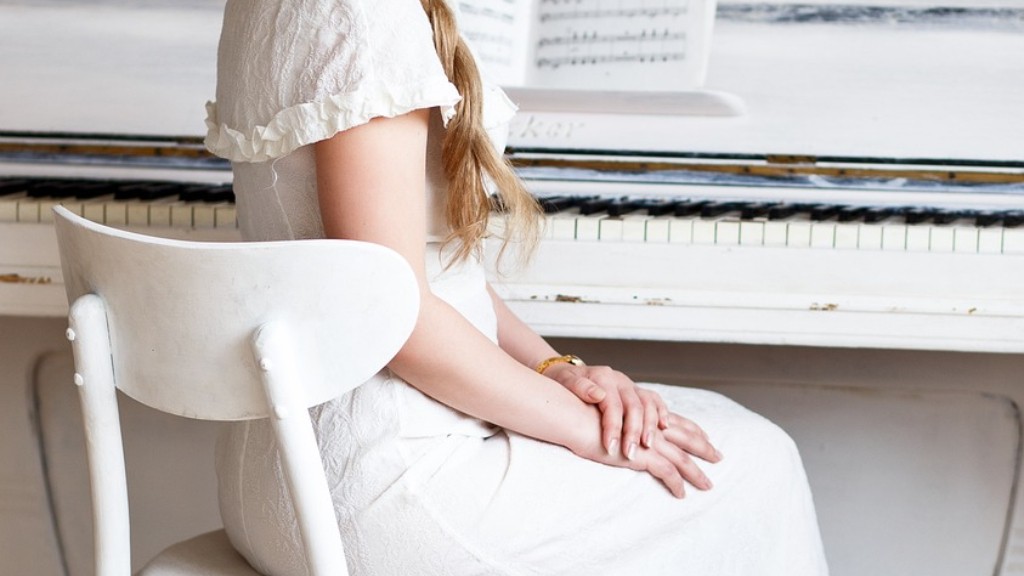most people think that composing a photograph is all about what subject you are photographing, and while that is definitely a part of it, there is so much more to think about! Composition is all about the placement and balance of the elements within the frame of your photograph, and how those elements work together to create a visually appealing and interesting image. By taking the time to carefully compose your photographs, you can dramatically improve the overall quality of your images.
In order to compose a photograph, you will need to consider the subject, the composition, and the lighting. The subject is the main focal point of the photograph, and the composition is the arrangement of the elements within the frame. The lighting should be considered when taking a photograph, as it can create different effects.
How do you compose an image?
When composing an image, it is important to have a process that you can repeat each time to produce a high-quality photo. The rule of thirds is a great place to start, as it is the most classic composition technique. This involves dividing your image into thirds, both horizontally and vertically, and placing your subject at the intersection of those lines. Other important composition techniques to consider are framing, symmetry, leading lines, and diagonal lines. Keeping the background simple will also help to make your subject stand out.
In order to create a great composition in your photography, there are five key elements that you should keep in mind:
1. Avoid too much negative space.
2. Embrace lines.
3. Obey the rule of thirds.
4. Create depth with a clear foreground, middleground, and background.
5. Pay attention to light and shadow.
How do you take well composed pictures
1. Use the rule of thirds: This is one of the most basic and essential composition guidelines that every photographer should follow. It simply means dividing your frame into thirds, both horizontally and vertically, and placing your subject along one of those lines or at the intersection of them. This will help create more balance and interest in your photo.
2. Use symmetry: Symmetry can be a very powerful compositional tool, especially in architecture and landscape photography. But it can also be used in other genres to create a sense of order and calmness.
3. Compose people intentionally: When composing photos with people in them, think about where you want them to be placed in the frame and what they should be doing. Are they the main subject or just a supporting element?
4. Combine several composition principles into one: You don’t always have to choose just one composition guideline to follow. In fact, sometimes it can be more interesting and effective to combine two or more.
5. Compose your photo using color: Color can be a very important compositional element, especially if you’re shooting in black and white. Pay attention to how different colors interact with each other and how they can help create mood and
In photography, composition is how the elements of a photo are arranged. A composition can be made up of many different elements, or only a few. It’s how the artist puts those things within a frame that help a photograph become more or less interesting to the viewer.
What is the best way to compose?
1. Listen to Other Composers
2. Nobody can compose music without some inspiration
3. Learn Music Theory
4. Play an Instrument (or a Few…)
5. Just Start Writing
6. Write One Part at a Time
7. Learn All the Ins and Outs of Music Software
8. Create Arrangements of Existing Songs
9. Work with a Partner
If you want to compose a song in 10 steps, here’s what you need to do:
1. Listen and analyze everything. Pay attention to the music you listen to and try to identify what makes it work.
2. Learn an instrument (or two… or more). The more instruments you know how to play, the more ideas you’ll have for your own songs.
3. Study music theory and sight reading. This will help you understand how music works and how to write your own songs.
4. Choose a mood and a theme. What feeling do you want your song to convey? What’s the overall message you want to get across?
5. Choose a song structure or format. Will your song be verse-chorus-verse? A ballad? Something else?
6. Start with the melody. The melody is the most important part of the song, so it’s a good idea to start with that.
7. Add other parts. Once you have the melody, you can start adding other elements like harmony, rhythm, and lyrics.
8. Finish the song. Make sure all the parts of the song fit together and that the song is complete.
9
What is the golden rule of photography?
The golden ratio is a guide to where to place a subject (a tree, person, building, etc) or element in a photo (like the horizon) where it will be most pleasing to the eye. That divine ratio is 1.618:1. The first recorded definition of the golden ratio came from Euclid in the 3rd Century BC.
We have all heard of the “rule of thirds” before, but what exactly is it? The rule of thirds is a guideline for determining how to compositionally divide up your image space in order to create an interesting and balanced photo. It is named such because you literally divide your photo space into thirds, both horizontally and vertically.
The idea behind the rule is that by placing your subject off-center, you create a more dynamic and interesting photo. Additionally, by using the rule of thirds, you can more accurately predict where the viewer’s eye will go when looking at your photo. Studies have shown that when people look at photos, their eyes tend to naturally drift to one of the intersection points of the thirds grid.
While the rule of thirds is a great starting point for creating well-composed photos, it is not a hard and fast rule that you must always adhere to. There will be times when breaking the rule of thirds will result in a more powerful or interesting photo.
So go out and start experimenting with the rule of thirds. Chances are you will find that it will help you to create more balanced and eye-catching photos!
What are the 10 photo compositions
Framing is a popular compositional technique that involves using elements of a scene to create a frame around your subject.
Leading lines are a great way to direct the viewer’s eye towards your subject.
Symmetry can be used to create a pleasing and balanced composition.
Negative space can be used to create a sense of depth and focus on your subject.
Fill the frame with your subject to create a more intimate and detailed composition.
Use contrast to create a striking and eye-catching image.
Use repetition and pattern to create a sense of movement and interest.
Depth of field can be used to isolate your subject and create a sense of depth.
Composition is the art of arranging the elements of a scene to create a pleasing or interesting effect. There are many different rules and guidelines for good composition, but at its heart, composition is about making choices and ensuring that your scene feels balanced and complete.
One of the most basic and well-known rules of composition is the rule of thirds. This rule states that a scene should be divided into thirds, both horizontally and vertically, and that the important elements of the scene should be placed along those lines or at the intersections. This creates a more pleasing and visually interesting effect than simply centering the subject.
Balance and symmetry are also important considerations in composition. A scene that is perfectly symmetrical can feel static and uninteresting, while a scene that is overly chaotic can be difficult to follow. Finding the right balance of elements is key to creating a pleasing composition.
Leading lines are another tool that can be used to great effect in composition. Leading lines are elements in the scene that lead the eye toward the subject or a point of interest. They can be used to add depth and interest to a scene, and to direct the viewer’s attention exactly where you want it to go.
Eye-level framing is another way to add interest
What are the three rules of composition photography?
A successful composition requires a focal point, structure, and balance.
The focal point is the center of attention in the composition and is usually the brightest, largest, or most colorful element. The structure is the way the composition is organized, and balance is the distribution of the elements in the composition.
To achieve a successful composition, you must include all three of these elements. The most important element is the focal point, as it will be the first thing that catches the viewer’s eye. The structure should be arranged in a way that leads the viewer’s eye around the composition, and the balance should be evenly distributed to create a sense of stability.
This formula is used to calculate the length of a line when it is divided into two parts. The larger section is represented by “a” and the smaller section is represented by “b”. The ratio of the larger section to the smaller section is equal to the ratio of the whole length to the larger section.
What is the rule of lines in photography
The rule of thirds is a basic rule of composition that states that an image should be divided into thirds, both horizontally and vertically, with the main subject placed at the intersection of those lines. This rule is often used by photographers to help create more balanced and interesting compositions.
A good composition is one that has just enough detail. Too few elements is bad because it robs the work of art of necessary detail that makes correct interpretation possible. It also ruins the balance of an image. And too many elements can be very distracting as well.
What is the purpose of composition in photography?
Composition is one of the most important aspects of photography – it can make or break a photo. By carefully considering the composition of your shot, you can control the flow of the image and the attention of the viewer. By using visual balance, you can create an image that is pleasing to the eye and tells the story you want to tell.
There are many different ways to compose a sentence, but the basic structure is always the same: subject + verb + object. In the first sentence, the subject is “she,” the verb is “composed,” and the object is “a letter to her sister.” In the second sentence, the subject is “he,” the verb is “is composing,” and the object is “in his studio.”
Is composing difficult
Creating music is no easy task and often requires a lot of hard work and dedication. However, the rewards can be great if you stick with it and continue to improve your craft. One important aspect to becoming a better composer is to write a lot of music, as this will help you hone your skills and become more proficient in your art. So if you’re up for the challenge, don’t give up and keep at it, as the payoff can be well worth the effort.
One of the biggest challenges of composing is just figuring out where to start. With so many possibilities, it can be hard to zero in on one particular idea and develop it into a complete piece. It can be helpful to start by sketching out a few possible ideas, and then choosing the one that seems the most promising to develop further.
Once you have a general idea of what you want to write, it can be helpful to brainstorm a bit and come up with a structure for your piece. This can give you a roadmap to follow as you write, and help you avoid getting lost in the creative process.
Finally, another big challenge of composing is actually finishing the piece. It can be easy to get caught up in the details and neglect the bigger picture, or to get lost in the creative process and lose sight of your original vision. It can be helpful to set a deadline for yourself, or to have someone else help you keep track of your progress and give you feedback.
Conclusion
In composition, the term “rule of thirds” refers to a basic guideline which states that an image should be divided into thirds, both horizontally and vertically, so that there are nine parts. The four points where the lines intersect are usually the strongest points in the image and should be used to place important compositional elements. This “rule” is not set in stone, but is meant to be a starting point for creating more interesting and dynamic compositions.
In conclusion, when composing a photograph, it is important to keep in mind the rule of thirds, leading lines, and framing. These elements will help to create a balanced and eye-catching composition.


